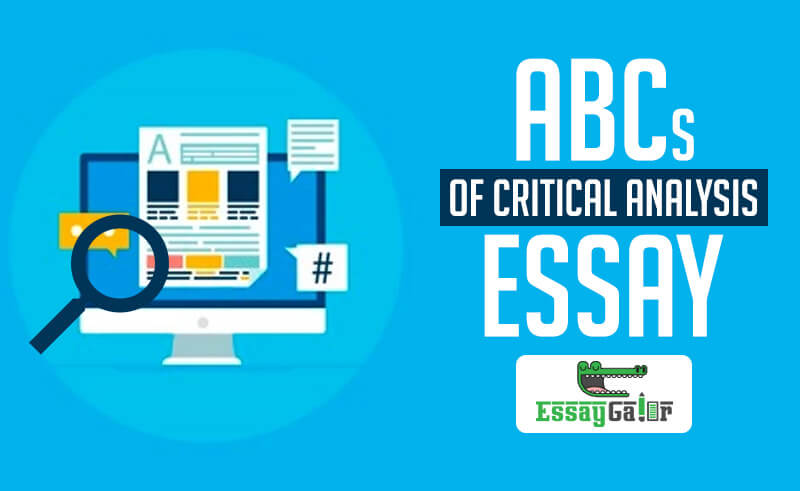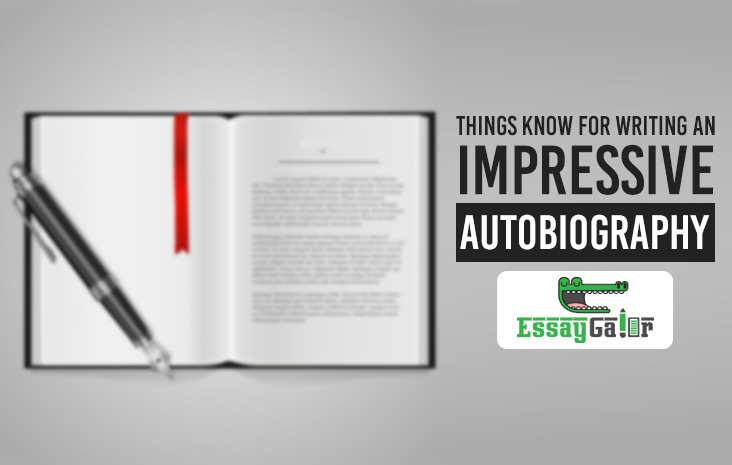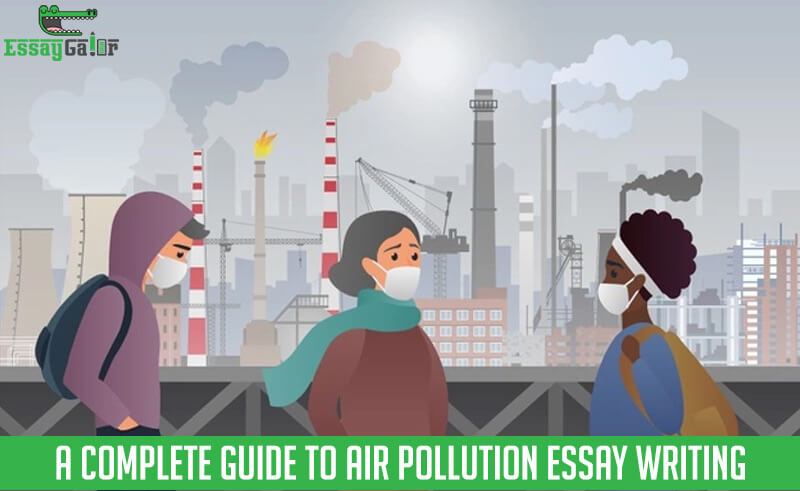
Want to create or adapt books like this? Learn more about how Pressbooks supports open publishing practices.

5.5 Process Analysis
Learning objectives.
- Determine the purpose and structure of the process analysis essay.
- Understand how to write a process analysis essay.
The Purpose of Process Analysis in Writing
The purpose of a process analysis essay is to explain how to do something or how something works. In either case, the formula for a process analysis essay remains the same. The process is articulated into clear, definitive steps.
Almost everything we do involves following a step-by-step process. From riding a bike as children to learning various jobs as adults, we initially needed instructions to effectively execute the task. Likewise, we have likely had to instruct others, so we know how important good directions are—and how frustrating it is when they are poorly put together.
Connecting the Pieces: Writing at Work
The next time you have to explain a process to someone at work, be mindful of how clearly you articulate each step. Strong communication skills are critical for workplace satisfaction and advancement. Effective process analysis plays a critical role in developing that skill set.
On a separate sheet of paper, make a bulleted list of all the steps that you feel would be required to clearly illustrate three of the following four processes:
- Tying a shoelace
- Parallel parking
- Planning a successful first date
- Being an effective communicator
The Structure of a Process Analysis Essay
The process analysis essay opens with a discussion of the process and a thesis statement that states the goal of the process.
The organization of a process analysis essay typically follows chronological order. The steps of the process are conveyed in the order in which they usually occur. Body paragraphs will be constructed based on these steps. If a particular step is complicated and needs a lot of explaining, then it will likely take up a paragraph on its own. But if a series of simple steps is easier to understand, then the steps can be grouped into a single paragraph.
The time transition phrases covered in the Narration and Illustration sections are also helpful in organizing process analysis essays (see Table 5.1 “Transition Words and Phrases for Expressing Time” and Table 10.2 “Phrases of Illustration”) . Words such as first , second , third , next , and finally are helpful cues to orient reader and organize the content of essay.
Always have someone else read your process analysis to make sure it makes sense. Once we get too close to a subject, it is difficult to determine how clearly an idea is coming across. Having a friend or coworker read it over will serve as a good way to troubleshoot any confusing spots.
Choose two of the lists you created in Exercise 1 and start writing out the processes in paragraph form. Try to construct paragraphs based on the complexity of each step. For complicated steps, dedicate an entire paragraph. If less complicated steps fall in succession, group them into a single paragraph.
Writing a Process Analysis Essay
Choose a topic that is interesting, is relatively complex, and can be explained in a series of steps. As with other rhetorical writing modes, choose a process that you know well so that you can more easily describe the finer details about each step in the process. Your thesis statement should come at the end of your introduction, and it should state the final outcome of the process you are describing.
Body paragraphs are composed of the steps in the process. Each step should be expressed using strong details and clear examples. Use time transition phrases to help organize steps in the process and to orient readers. The conclusion should thoroughly describe the result of the process described in the body paragraphs. See Appendix B: Examples of Essays to read an example of a process analysis essay.
Choose one of the expanded lists from Exercise 2 . Construct a full process analysis essay from the work you have already done. That means adding an engaging introduction, a clear thesis, time transition phrases, body paragraphs, and a solid conclusion.
Key Takeaways
- A process analysis essay explains how to do something, how something works, or both.
- The process analysis essay opens with a discussion of the process and a thesis statement that states the outcome of the process.
- The organization of a process analysis essay typically follows a chronological sequence.
- Time transition phrases are particularly helpful in process analysis essays to organize steps and orient reader.
Putting the Pieces Together Copyright © 2020 by Andrew Stracuzzi and André Cormier is licensed under a Creative Commons Attribution-NonCommercial-ShareAlike 4.0 International License , except where otherwise noted.
Share This Book
Your Ultimate Guide On How To Write A Process Analysis Essay
Most students assume that writing a process analysis essay is a problematic work to do. But, in reality, it’s just like any other written homework assignment. In this comprehensive guide, we will explain how to write a process analysis essay, list some interesting process analysis essay topics and share some useful writing tips for better understanding.
What is a Process Analysis Essay?
A process analysis essay is a type of expository essay where you explain to your reader the entire process of completing a task. It's similar to narrating a recipe of a dish, stating all essential ingredients and steps logically for a reader to follow with ease.
In simple terms, in a process analysis essay, you must answer two crucial questions:
-> What is a particular task? -> How is it done?
There are two types of process analysis essays:
- Directional Essay: Here, you provide directions on how to do something or complete a task in a certain way.
- Informational Essay: In this type of essay, you explain to your readers how something works, like how a smartphone.
Let us now discuss the outline for writing a process analysis essay and some crucial steps for the same.
How to Write a Process Analysis Essay? 4 Fundamental Steps
Learning how to write a process analysis essay isn't as difficult as it seems. You need to focus on explaining a particular action and highlight the process. There are four essential steps to writing a process analysis essay.
- Choose the topic:
Be clear about the process analysis essay topics that you have shortlisted. Choose the one you that find interesting and can research on to make it compelling for your readers.
- Break down the process:
The whole writing process becomes easy if you have a well-defined purpose. Moreover, when the process in the outline for your process analysis essay is divided into simple steps, it becomes more organized.
- Use proper transitional words/phrases:
Transitional words give a sense of direction. Phrases like “once that’s done”, “next”, or “after that” will help readers follow what you are trying to say.
- Examine your paper:
Your process analysis essay won't make sense if you over-complicate the process with unnecessary essay writing steps and details. Give your paper a thorough read and always look out for possible omissions to make your writing more concise.
Always consider these four steps while you are writing a process analysis essay . Also, remember to create an outline for your process analysis essay with bullet points before you start writing.
Standard Outline for a Process Analysis Essay
The very first thing that you must do once you have shortlisted a topic for your essay is to draft an outline for your process analysis essay. Unlike other pieces, you don't have to follow the conventional five-paragraph rule. You need to write an introduction, body, and a conclusion with a proper explanation of the steps involved.
Introduction:
- You must describe your essay topic and the purpose of the process briefly.
- Discuss the major points highlighting its usefulness.
- Describe the risks, outcome, and expected results if the reader uses the steps correctly.
- Keep your introduction short, engaging, and informative.
Body:
- Describe the entire process in multiple paragraphs elaborately.
- Keep a separate paragraph for every step of the process.
- Use proper transitional words to connect the paragraphs.
- Write in descriptive style and mention the prerequisites or tools necessary for the process.
Conclusion/Analysis:
- Summarise all the steps involved in the process.
- Highlight the main points and maintain a proper sequence.
- Avoid repeating the instructions mentioned in the paragraphs.
- Explain the outcome and give suitable notes, if necessary.
You don’t have to worry about how to write a process analysis essay if you draft an outline for your process analysis essay with these essential sections. Also, with an overview, the chance of missing out on crucial details becomes minimal. To know about tips to improve writing skills go the link.
Process Analysis Essay Examples
Topic: How to Prepare Pineapple Butter Jam
Pineapple butter jam is similar to pineapple jam but is highly concentrated and commonly used as a butter-like topping on popcorn or bread. It takes time for the sugar in the pineapple to caramelize into a deep brown color.
To make a jar of pineapple butter jam, everything that you need is readily available in a regular kitchen –a slow cooker, food processor, chopping board, knife, mixing bowl, spatula, spoon, sugar, pineapple, and cinnamon and nutmeg for flavouring. You can use a pineapple slicer to shorten the preparation time. Remember, if you want a smooth buttery consistency jam with no lumps, you must mince the pineapple well. So, you can use a food processor to mince the pieces of pineapple.
Once you are ready with the ingredients, it’s time to learn the process of preparing pineapple butter jam. Before you start with the chopping, clean the slab and the chopping board. The quantity of pineapple and butter will depend on how much pineapple butter jam you want to make. Let’s take six cups of freshly chopped pineapples and mince it in a food processor until there’s no lump.
After that, put the minced pineapples in a slow cooker and put it on "high". Once the minced pineapple starts cooking, you will notice the watery consistency slowly changing. Add sugar, nutmeg, and cinnamon powder until it reaches the taste and texture you want. Be careful as the sweetness is likely to vary. Depending on what type of pineapple you are using, add sugar throughout the cooking process. You can taste from time to time before adding more sugar. It is highly advisable not to add more than two spoons of sugar in six cups of pineapple if you don't have a sweet tooth.Let it cook uncovered and keep stirring every 7-8 minutes so that your pineapple butter jam doesn’t burn.
After cooking it on high for 40 minutes, turn the slow cooker to low and cover it. The cooking duration depends on the types of pineapple you have chosen to cook. For a fully ripe pineapple, it takes 6-7 hours to prepare. Turn off the gas when you see there's no water at the top and around the sides of the slow cooker. As your pineapple butter jam slowly cooks, make sure you stir it thoroughly after every 45 minutes.
Finally, when you see the pineapple butter jam has reached the colour, consistency, and taste you want, get it off the oven and remove it from the slow cooker into a jar.
Reread this sample and try to write a process analysis essay. Don't worry if you are unable to find any suitable topics for your process analysis essay homework. Below, we have enlisted some popular process analysis essay topics for which you will get ample of resources on the internet to write an A-grade essay paper.
25+ Excellent Process Analysis Essay Topics
- How to raise a Labrador?
- How to win a game of chess?
- How to lose weight without following insane diet plans?
- How to find the perfect college?
- How to achieve academic success?
- How to plan the perfect weekend party?
- How to survive without a phone?
- How to stay sober throughout the weekend?
- How to enjoy a Friday night with less than 30 Euros?
- How to make the perfect red velvet cookies?
- How to make the perfect cup of cappuccino?
- How to build and maintain a stable friendship?
- How do Italians make their food so tasty?
Are you looking for process analysis essay topics exclusively for college students? Not an issue! Here’s an additional list of topics for a process analysis essay for all the college-goers.
- How to survive the recession?
- How to overcome insomnia without medical help?
- How to avoid a nervous breakdown during a presentation?
- How to build and maintain a stable relationship?
- How do Jewish people pray?
- How to install spy applications on mobile?
- How to live with no modern capitalism?
- How can developed nations prevent civil wars?
- How do gambling companies play with an individual’s psychology?
- How can the brain differentiate between colors?
- How to make new friends without hurting existing friends?
- How does anxiety influence a person to smoke?
- How to live a middle-class life?
There you go! Use rate my paper tool which effectively maintains the quality of your academic work. Refer to this list of process analysis essay topics whenever you run short of ideas for your college process analysis essay.
Need Help with Your Process Analysis Essay?
We are here.
We, at Essaygator.com, are here to teach you how to write a process analysis essay like a real expert.You not only get excellent academic support but also can enjoy several benefits, like:
- Top-notch educational assistance from our PhD qualified essay writer
- FREE rework assistance on unfulfilled orders
- Fantastic pocket-friendly prices
- 100% unique and well-researched papers
- Round the clock customer support
- FREE access to our educational tools and sample repository
- ON-TIME delivery of all types of solutions
- Safe and secured payment gateways
Why wait? Place your order right away and secure high scores in your upcoming semester with the support of our academicians.
Do you want to share?

YOU MIGHT ALSO LIKE

ABCs of Critical Analysis Essay

101 Guide: How to Write the Perfect Diagnosti..

101 of Writing An Illustrative Essay

How to write a hook for an essay?

What Should You Know for Writing an Impressiv..

Writing the Perfect Compare and Contrast Essa..
Leave a reply, place your order.
Get help to our Experts

Recent Posts

publisher November 14,2021
publisher November 11,2021
publisher October 27,2021

publisher October 25,2021

publisher September 30,2021
Math Assignment Help
Assignment Help
Homework Help
Essay Topics
Essay Format
Referencing And Citation
Dissertation Writing
Research Paper
Top Experts

Popular Posts

Admin March 08,2016

publisher April 30,2018

Admin March 31,2016

publisher September 17,2020
Subscribe Newsletter
You can place your order for free now. Simply submit your order and see what our writers can Subscribe to get regular update!
Haven’t taken a decision yet?
Hurry! Time is running out. Place your order with us now and be the topper of your class.
Have any Query? Contact with us

Process Analysis
Writing for Success
Learning Objectives
- Determine the purpose and structure of the process analysis essay.
- Understand how to write a process analysis essay.
THE PURPOSE OF PROCESS ANALYSIS IN WRITING
The purpose of a process analysis essay is to explain how to do something or how something works. In either case, the formula for a process analysis essay remains the same. The process is articulated into clear, definitive steps.
Almost everything we do involves following a step-by-step process. From riding a bike as children to learning various jobs as adults, we initially needed instructions to effectively execute the task. Likewise, we have likely had to instruct others, so we know how important good directions are—and how frustrating it is when they are poorly put together.
WRITING AT WORK
The next time you have to explain a process to someone at work, be mindful of how clearly you articulate each step. Strong communication skills are critical for workplace satisfaction and advancement. Effective process analysis plays a critical role in developing that skill set.
On a separate sheet of paper, make a bulleted list of all the steps that you feel would be required to clearly illustrate three of the following four processes:
- Tying a shoelace
- Parallel parking
- Planning a successful first date
- Being an effective communicator
THE STRUCTURE OF A PROCESS ANALYSIS ESSAY
The process analysis essay opens with a discussion of the process and a thesis statement that states the goal of the process.
The organization of a process analysis essay typically follows chronological order. The steps of the process are conveyed in the order in which they usually occur. Body paragraphs will be constructed based on these steps. If a particular step is complicated and needs a lot of explaining, then it will likely take up a paragraph on its own. But if a series of simple steps is easier to understand, then the steps can be grouped into a single paragraph.
The time transition phrases covered in the Narration and Illustration sections are also helpful in organizing process analysis essays (see Table 10.1 “Transition Words and Phrases for Expressing Time” and Table 10.2 “Phrases of Illustration”). Words such as first, second, third, next, and finally are helpful cues to orient reader and organize the content of essay.
Always have someone else read your process analysis to make sure it makes sense. Once we get too close to a subject, it is difficult to determine how clearly an idea is coming across. Having a friend or coworker read it over will serve as a good way to troubleshoot any confusing spots.
Choose two of the lists you created in Exercise 1 and start writing out the processes in paragraph form. Try to construct paragraphs based on the complexity of each step. For complicated steps, dedicate an entire paragraph. If less complicated steps fall in succession, group them into a single paragraph.
WRITING A PROCESS ANALYSIS ESSAY
Choose a topic that is interesting, is relatively complex, and can be explained in a series of steps. As with other rhetorical writing modes, choose a process that you know well so that you can more easily describe the finer details about each step in the process. Your thesis statement should come at the end of your introduction, and it should state the final outcome of the process you are describing.
Body paragraphs are composed of the steps in the process. Each step should be expressed using strong details and clear examples. Use time transition phrases to help organize steps in the process and to orient readers. The conclusion should thoroughly describe the result of the process described in the body paragraphs.
Choose one of the expanded lists from Exercise 2. Construct a full process analysis essay from the work you have already done. That means adding an engaging introduction, a clear thesis, time transition phrases, body paragraphs, and a solid conclusion.
Key Takeaways
- A process analysis essay explains how to do something, how something works, or both.
- The process analysis essay opens with a discussion of the process and a thesis statement that states the outcome of the process.
- The organization of a process analysis essay typically follows a chronological sequence.
- Time transition phrases are particularly helpful in process analysis essays to organize steps and orient reader.
Process Analysis Copyright © 2016 by Writing for Success is licensed under a Creative Commons Attribution-NonCommercial-ShareAlike 4.0 International License , except where otherwise noted.
Share This Book
Feedback/errata.
Comments are closed.
How to Write a Process Analysis Essay Like a PRO
.png)
Ever wondered how to explain a task or procedure in a way that's easy for others to follow? That's where a process analysis essay comes in. It's a type of writing that breaks down a process into clear steps, helping readers understand how to do something or how something works.
Imagine you're sharing your secret recipe for making the perfect sandwich. These essays let you guide someone through each stage – from gathering ingredients to assembling the sandwich – making it a breeze for them to recreate your tasty creation.
For a deep dive into this academic task, let our professional essay writers get into the nitty-gritty of how to write a process analysis essay smoothly and effectively.
What Is A Process Analysis Essay?
A process analysis essay is a type of academic writing that aims to explain how something is done, step by step. This genre of essay is distinctive in its focus on breaking down a complex process into manageable and understandable parts. Whether it's detailing the steps involved in making a recipe, explaining a scientific procedure, or elucidating the stages of a mechanical operation, the primary objective is to provide the reader with a clear understanding of the process.
Much like when learning how to write an expository essay , the hallmark of writing a process analysis essay is also its sequential organization. The steps or stages of the process are presented in a logical order, enabling the reader to follow the progression effortlessly. This chronological arrangement is crucial for the clarity and effectiveness of the essay.
A successful essay also takes into account the target audience. Whether it's a novice or an expert in the subject matter, the writer should tailor the explanations to suit the reader's level of understanding. This consideration ensures that the essay serves its instructional purpose effectively.

How to Select Process Analysis Essay Topics
Choosing the right topic for your process essay is a pivotal step in ensuring both reader engagement and the effectiveness of your writing. One approach is to draw from your personal expertise, considering areas you are familiar with and passionate about. This not only facilitates a smoother writing process but also allows you to share genuine insights and tips.
Consider the practical utility and relevance of your chosen topic. Opt for processes that resonate with a wide audience, addressing common problems or challenges people encounter in their daily lives. Your essay can then serve as a practical guide, offering valuable solutions to everyday issues.
Exploring unconventional or unique processes adds a layer of novelty to your essay, capturing the reader's attention and providing insights they may not have encountered before. Additionally, process analysis examples that lend themselves well to visual representation, such as diagrams or charts, can enhance the overall effectiveness of your piece.
Delve into everyday mysteries that people often take for granted. By demystifying the inner workings of something familiar in your analysis, you can spark curiosity and engagement. Alternatively, you can always opt for an option to buy essay online for added convenience.
%20(2).png)
50 Great Process Analysis Essay Topics
Ever wondered about the secrets behind everyday activities? Imagine exploring 50 intriguing process essay topics, each dissecting the step-by-step magic of simple processes. Let's browse through these prompts and make writing process analysis essays more interesting.
- How to brew the perfect cup of coffee using a French press.
- The process of creating a personalized workout routine for beginners.
- How to make homemade pizza dough from scratch.
- How to organize a successful charity event in your community.
- The process of assembling a basic bicycle.
- How to effectively budget and manage personal finances.
- How to create a visually appealing and informative infographic.
- The process of making a custom scented candle at home.
- How to conduct a productive job interview as an interviewer.
- The process of designing and planting a small vegetable garden.
- How to troubleshoot common computer issues on Windows.
- How to properly clean and maintain a bicycle chain.
- The process of writing a compelling and persuasive business proposal.
- How to organize a cluttered closet and create a functional wardrobe.
- How to make a healthy and delicious smoothie at home.
- The process of creating a personalized study schedule for exams.
- How to effectively communicate in a professional email.
- How to plan and execute a successful road trip.
- The process of setting up a basic home security system.
- How to create a captivating and engaging presentation.
- How to build a simple birdhouse for your backyard.
- The process of brewing your own kombucha at home.
- How to conduct a scientific experiment and analyze results.
- How to create a personalized skincare routine for different skin types.
- The process of developing a mobile app from concept to launch.
- How to sew a basic button on a shirt or blouse.
- How to properly install a car seat for infants.
- The process of making homemade ice cream without an ice cream maker.
- How to perform basic car maintenance, such as changing the oil.
- How to create a DIY natural cleaning solution for your home.
- The process of setting up and managing a blog.
- How to paint a room and achieve a professional finish.
- How to plan and execute a successful surprise party.
- The process of creating a personalized morning routine for productivity.
- How to tie different types of knots for various purposes.
- How to effectively manage time and prioritize tasks.
- The process of creating a budget-friendly meal plan for a week.
- How to perform basic home repairs, such as fixing a leaky faucet.
- How to organize and declutter your digital files and folders.
- The process of creating a unique and personalized piece of artwork.
- How to make your own natural and eco-friendly cleaning products.
- How to develop a habit of daily meditation for stress relief.
- The process of brewing your own beer at home.
- How to design and plant a low-maintenance backyard garden.
- How to create a podcast from recording to publishing.
- The process of creating a DIY home spa day for relaxation.
- How to effectively negotiate a salary or contract.
- How to troubleshoot and fix common smartphone issues.
- The process of creating a homemade face mask for skincare.
- How to set up and organize a community clean-up event.
Creating a Step-by-Step Process Analysis Essay
Now, let's break down the process analysis essay structure into distinct sections, each with some unique insights:
.png)
Begin your topic with a compelling introduction that captures the reader's attention. Provide a brief overview of the process you will be explaining. Consider adding a personal anecdote or a surprising fact to make your introduction more engaging. For instance, if your topic is about brewing coffee with a French press, start by describing the aroma of freshly ground beans or the anticipation of that first sip.
Craft a clear thesis statement that outlines the specific steps involved in the process and emphasizes its importance or benefits. For example, if your process analysis essay is about creating a personalized workout routine, your thesis might highlight how tailoring workouts can lead to better adherence and more significant fitness gains.
Dedicate a section to list and explain all the materials or ingredients needed for the process. Include any variations or alternatives, and offer tips on where to find specific items. For a topic on the homemade pizza dough recipe, this could involve discussing the different types of flour and their impact on crust texture.
This is the meat of your essay. Clearly articulate each step in the process. Use a logical progression, and consider incorporating visuals like diagrams or images for complex steps. Highlight potential pitfalls or common mistakes and suggest how to avoid them. In the case of a topic on the job interview process, discuss not just what to ask but also how to read non-verbal cues from candidates.
Share additional insights that can enhance the reader's experience with the process. This could involve shortcuts, time-saving techniques, or creative variations. If you're guiding readers on the topic of designing a mobile app, discuss emerging trends and user interface tricks that can make their app stand out.
Address potential challenges or roadblocks that readers might encounter in a separate process analysis essay paragraph. Provide solutions or alternative approaches to keep the process running smoothly. If your topic is about creating a blog, include a section on common blogging challenges (like writer's block) and how to overcome them.
Summarize the key points of the process without introducing new information. Reinforce the importance of following the steps and achieving the desired outcome. Consider ending with an invitation for readers to share their experiences or ask questions. For instance, if you've guided them through the process of organizing a surprise party, conclude by encouraging them to share their favorite surprises in return.
Process Analysis Essay Outline
Here's an example of a process essay outline using the topic 'How to Brew the Perfect Cup of Coffee Using a French Press':
I. Introduction
- Opening Hook: Start your process essay with a vivid description or a surprising fact about the aroma of freshly ground coffee.
- Background Information: Briefly introduce the French press and its significance in brewing coffee.
- Thesis Statement: Highlight the steps involved in brewing an exceptional cup of coffee using a French press and the rewarding experience it provides.
II. Materials Needed
- French Press: Explain the different parts of the French press and their functions.
- Fresh Coffee Beans: Discuss the importance of using quality beans and potential flavor variations.
- Coffee Grinder: Highlight the benefits of grinding your coffee beans just before brewing.
- Hot Water: Specify the temperature and quality of water needed for optimal extraction.
- Stirring Spoon and Timer: Emphasize the role of stirring for even extraction and the importance of precise timing.
III. Step-by-Step Instructions
1: Measure Coffee Beans
- Discuss the recommended coffee-to-water ratio for a strong or mild brew.
- Highlight the significance of precision in measurement.
2: Grinding Coffee Beans
- Explain the grind size suitable for a French press.
- Emphasize the impact of grind size on flavor extraction.
3: Boiling Water
- Specify the optimal water temperature.
- Discuss the significance of using filtered water for better taste.
4: Adding Coffee Grounds to the French Press
- Provide tips on evenly distributing grounds in the press.
- Discuss the importance of a consistent coffee bed for extraction.
5: Pouring Water and Stirring
- Explain the pouring technique to saturate all coffee grounds.
- Highlight the purpose of stirring for uniform flavor extraction.
6: Placing the Lid and Waiting
- Discuss the recommended steeping time.
- Address common misconceptions about steeping duration.
7: Pressing and Pouring
- Explain the proper technique for pressing down the plunger.
- Provide tips on pouring to avoid sediment in the cup.
IV. Tips and Tricks
- Experimenting with Brew Time: Encourage readers to adjust steeping time based on personal taste preferences.
- Choosing Coffee Varieties: Suggest trying different coffee bean varieties for unique flavor profiles.
- Maintaining the French Press: Provide tips on cleaning and storage for longevity.
- V. Troubleshooting
- Bitter Coffee: Address possible causes and solutions.
- Weak Brew: Discuss adjustments to make for a stronger cup.
- Grounds in Coffee: Provide guidance on minimizing sediment.
VI. Conclusion
- Summarize Key Steps: Recap the essential steps for brewing a perfect cup.
- Reinforce Thesis: Reiterate the satisfaction of achieving a flavorful cup using a French press.
- Call to Action: Invite readers to try the process and share their experiences.
This process analysis essay structure provides a structured framework, making sure your ideas flow smoothly from the start to the finish. Feel free to tweak it to match your essay's needs and your own personal touch!
Process Analysis Essay Example
Using an example topic can be a real time-saver. Take a look at our complimentary process analysis example for a peek into how these essays should be structured.
How to Bake a Perfect Chocolate Chip Cookie
Introduction:
Baking chocolate chip cookies is a delightful and rewarding experience that can be enjoyed by novice and experienced bakers alike. While the end result may seem like a simple treat, achieving the perfect balance of gooey texture and rich flavor requires a careful and systematic process. In this process analysis essay, we will explore the step-by-step procedure to bake a batch of irresistible chocolate chip cookies.
Ingredients:
Before diving into the baking process, gather the following ingredients:
- 1 cup unsalted butter, softened
- 1 cup granulated sugar
- 1 cup packed brown sugar
- 2 large eggs
- 1 teaspoon vanilla extract
- 3 cups all-purpose flour
- 1 teaspoon baking soda
- 1/2 teaspoon baking powder
- 1/2 teaspoon salt
- 2 cups chocolate chips
Step 1: Preheat the Oven. Start by preheating your oven to 350°F (175°C). This ensures that the cookies will bake evenly and achieve the perfect golden-brown color.
Step 2: Cream the Butter and Sugars. In a large mixing bowl, cream together the softened butter, granulated sugar, and brown sugar until the mixture is light and fluffy. This step is crucial for creating a soft and chewy texture in the cookies.
Step 3: Add Eggs and Vanilla. Add the eggs one at a time, beating well after each addition. Then, mix in the vanilla extract to enhance the overall flavor of the cookies.
Step 4: Combine Dry Ingredients. In a separate bowl, whisk together the all-purpose flour, baking soda, baking powder, and salt. Gradually add this dry mixture to the wet ingredients, ensuring a thorough incorporation.
Step 5: Fold in Chocolate Chips. Gently fold in the chocolate chips until they are evenly distributed throughout the cookie dough. This step is where the sweetness and richness of the chocolate chips come into play.
Step 6: Scoop and Bake. Using a cookie scoop or a tablespoon, drop rounded balls of cookie dough onto a parchment-lined baking sheet. Ensure enough space between each cookie to allow for spreading during baking.
Step 7: Bake to Perfection. Place the baking sheet in the preheated oven and bake for 10-12 minutes or until the edges are golden brown. Keep a close eye on the cookies to avoid overbaking, as this can result in a dry texture.
Step 8: Cool and Enjoy. Allow the cookies to cool on the baking sheet for a few minutes before transferring them to a wire rack to cool completely. Once cooled, indulge in the heavenly combination of a crisp outer layer and a soft, gooey center.
Conclusion:
Baking the perfect chocolate chip cookie is a delightful journey that involves precision and attention to detail. By following this step-by-step process, you can create a batch of cookies that will undoubtedly be a hit with friends and family. So, preheat your oven, gather your ingredients, and embark on the delicious adventure of baking the perfect chocolate chip cookie.

What Aspects Should Be Considered While Writing a Process Analysis?
Can you guide me on creating a process analysis essay outline, what are some great process analysis essay topics, what does process analysis paragraph mean, can i use informative process analysis essay examples.

- Plagiarism Report
- Unlimited Revisions
- 24/7 Support

- school Campus Bookshelves
- menu_book Bookshelves
- perm_media Learning Objects
- login Login
- how_to_reg Request Instructor Account
- hub Instructor Commons
- Download Page (PDF)
- Download Full Book (PDF)
- Periodic Table
- Physics Constants
- Scientific Calculator
- Reference & Cite
- Tools expand_more
- Readability
selected template will load here
This action is not available.

9.3: Writing a Process Analysis Essay
- Last updated
- Save as PDF
- Page ID 6278

- Amber Kinonen, Jennifer McCann, Todd McCann, & Erica Mead
- Bay College Library
Choose a topic that is interesting, is relatively complex, and can be explained in a series of steps. As with other rhetorical writing modes, choose a process that you know well so that you can more easily describe the finer details about each step in the process. In fact, the process should be one in which you can add relevant personal examples, including tips, tricks, and anecdotes to make it your own. It should not read like a recipe or an instructional manual; it should be personal and engaging. Furthermore, your thesis statement should come at the end of your introduction, and it should state the final outcome of the process you are describing.
Body paragraphs are composed of the steps in the process. Each step should be expressed using strong details and clear examples. Use time transition phrases to help organize steps in the process and to orient readers. The conclusion should thoroughly describe the result of the process described in the body paragraphs.
key takeaways
- A process analysis essay explains how to do something, how something works, or both.
- The process analysis essay opens with a discussion of the process and a thesis statement that states the outcome of the process.
- The organization of a process analysis essay typically follows a chronological sequence.
- Time transition phrases are particularly helpful in process analysis essays to organize steps and orient reader
Examples of Essays
- “How to Make it in College, Now That You’re Here,” by Brian O’Keeney
- “Orientation,” by Daniel Orozco
- “How to Operate the Shower Curtain,” by Ian Frazier • “Behind the Formaldehyde Curtain,” by Jessica Mitford
- “7 Easy Steps to Quit Smoking”

IMAGES
VIDEO